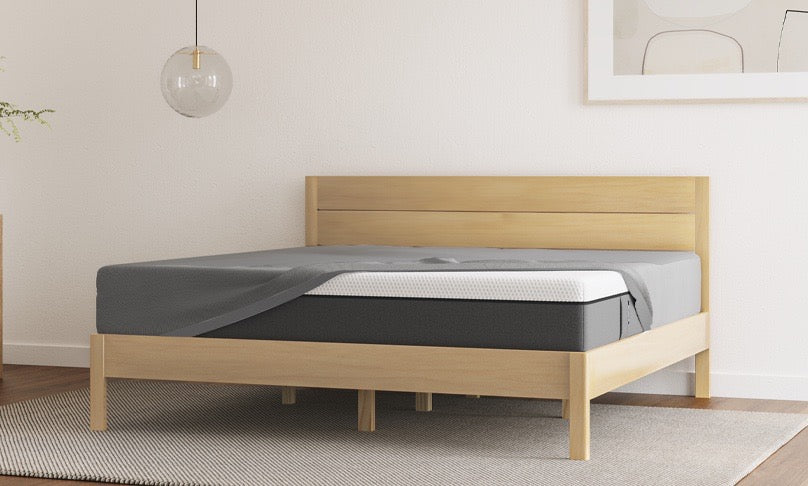The way you sleep every night has a huge impact on your health. While most people never think twice about their sleeping position, experts suggest that posture during sleep can either improve or worsen conditions like back pain, snoring, and breathing issues. The good news? With the right knowledge, and sometimes the right sleep setup you can wake up healthier and more refreshed.
In this blog, we’ll explore the best sleeping positions for different problems and share how small adjustments (plus supportive sleep essentials) can make a big difference.
Why Sleeping Position Matters
When you sleep, your body relaxes, but your muscles, spine, and airways still need proper alignment. Poor posture can:
a. Strain your lower back or neck
b. Block your airways, increasing snoring and sleep apnea risk
c. Reduce oxygen intake, affecting breathing quality
d. Lead to stiffness and fatigue in the morning
That’s why doctors often recommend being mindful of your sleep posture for back pain and other health concerns.
1. Sleeping Position for Back Pain
Back pain is one of the most common complaints among Indian adults, often caused or worsened by poor spinal support at night.
Best Position: On Your Back with Knee Support
Sleeping flat on your back keeps your spine aligned, while placing a pillow under your knees reduces strain on the lower back.
Alternative: Side Sleeping with a Pillow Between Knees
If you prefer sleeping on your side, placing a pillow between your knees balances the hips and keeps the spine neutral.
Pro Tip: Using an orthopedic mattress ensures even weight distribution and pressure relief. A supportive pillow, like the Emma Hybrid Pillow, also prevents neck strain.
2. Sleeping Position for Snoring
Snoring is often caused when your tongue and soft tissues block the airway during sleep, especially if you’re lying flat on your back.
Best Position: On Your Side
Side sleeping reduces airway obstruction, lowering the intensity and frequency of snoring.
Alternative: Elevated Back Sleeping
If you can’t avoid back sleeping, elevate your head and upper body slightly to keep airways open.
Pro Tip: An adjustable pillow or slightly raised head position can make side sleeping more comfortable. Breathable bedding also helps reduce congestion and improves airflow.
3. Sleeping Position for Better Breathing
Good breathing during sleep is essential for oxygen circulation and overall health. Poor posture can restrict lung expansion and airflow.
Best Position: Back Sleeping with Elevated Head
This allows your chest and lungs to open up naturally. Keep your head slightly elevated to prevent airway collapse.
Alternative: Left Side Sleeping
Left-side sleeping improves blood circulation and reduces acid reflux, which often disrupts breathing at night.
Pro Tip: A mattress with good pressure relief ensures that side sleeping doesn’t cause shoulder or hip discomfort. For added comfort, a mattress topper can provide cushioning while maintaining spinal support.
4. Sleeping Positions to Avoid
Not all sleeping positions are healthy, especially if you suffer from chronic back pain or breathing issues.
a. Stomach Sleeping: Puts strain on the neck and spine, leading to long-term pain.
b. Curled-Up Side Sleeping (Fetal Position): Can restrict breathing and worsen snoring for some people.
While occasional use is fine, these shouldn’t be your primary sleeping postures.
Additional Tips for Healthy Sleep Posture
a. Choose the Right Mattress: A medium-firm mattress supports spinal alignment and prevents sagging. Over time, this reduces back pain significantly.
b. Invest in a Supportive Pillow: Your pillow should align with your sleeping position. For example, side sleepers need higher loft pillows, while back sleepers need medium loft for neck support.
c. Use a Mattress Protector: Protectors not only keep the mattress clean but also help maintain firmness and durability, which indirectly affects posture.
d. Stay Consistent: Training your body to adopt a healthier sleeping posture may take time, but consistency brings long-term results.
How Emma Products Support Better Sleeping Positions
While posture plays the lead role, your sleep surface acts as the foundation. Emma’s range of products complements healthy sleeping positions:
a. Emma Original & Hybrid Mattresses – Orthopedic support and pressure relief for spinal alignment. Shop Now.
b. Emma Hybrid Pillow – Adjustable layers allow you to customize height, perfect for both back and side sleeping. Shop Now.
c. Emma Mattress Protector – Keeps your mattress fresh and durable, ensuring consistent support. Shop Now.
These solutions help make your preferred best sleeping position more effective and sustainable.
Final Thoughts
Your sleeping position can either help heal or worsen issues like back pain, snoring, and breathing difficulties. For most people, back sleeping with slight elevation or side sleeping with proper support are the healthiest choices.
Combine mindful posture with a supportive mattress and pillow, and you’ll wake up feeling more energized, pain-free, and refreshed.
Remember: better sleep isn’t about how long you sleep, but how well you align your body while resting.











